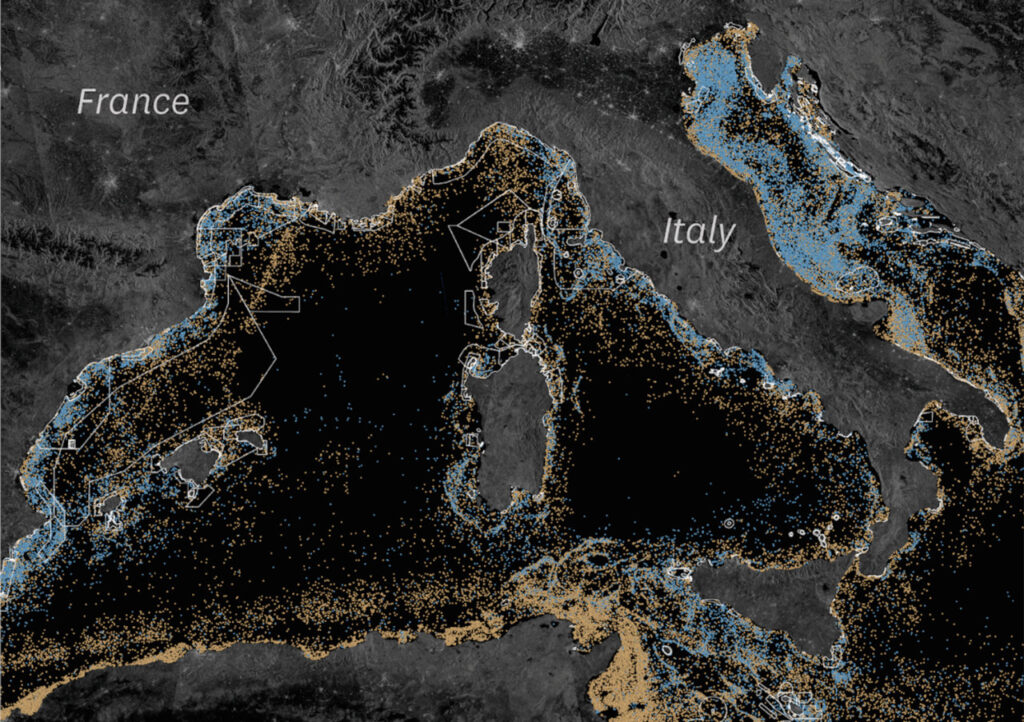Most industrial fishing in marine protected areas goes unmonitored
A study conducted by the University of Montpellier, IRD, CNRS and the NGO BLOOM has just been published in the journal Science on July 24. It reveals that the majority of the world's marine protected areas remain exposed to industrial fishing, much of which escapes public scrutiny. Nearly half of the 6,000 coastal MPAs (marine protected areas) studied were fished industrially between 2022 and 2024, and two-thirds of the vessels involved failed to transmit their position, thus escaping public monitoring systems. The actual intensity of industrial fishing in these areas has therefore been grossly underestimated. In short, a large proportion of MPAs do not comply with scientific recommendations and offer little or no protection against industrial fishing.
The reality of industrial fishing in marine protected areas
The study is based on data from the NGO Global Fishing Watch, which combines satellite images with GPS signals from vessels transmitted by the Automatic Identification System (AIS). This GPS positioning system makes public the position and trajectory of ships. By cross-referencing this data with satellite image detections, researchers can identify not only reported vessels, but also those that do not appear on public surveillance systems.
The study reveals that industrial fishing vessels operate in almost half of all coastal MPAs, and that two-thirds of these escape detection by public systems, including in the European Union, where AIS is mandatory for vessels over 15 meters. This unprecedented approach reveals that industrial fishing in MPAs is far more significant than previously estimated, with the AIS data used by most governments reflecting only a limited part of the reality. The study also shows that MPAs free from industrial activity are so mainly because of their strategic location - remote coastal OR areas, little exploited by industrial fishing - and not because of their level of protection. This reveals an opportunistic placement of MPAs, located in areas with little fishing, in order to more easily achieve international objectives.
Towards genuine ocean protection
MPAs are one of the most effective tools for protecting the ocean, marine life and artisanal fishing. Although governments have pledged to protect 30% of their waters by 2030, and more than 9% of the ocean is officially covered by marine protected areas (MPAs) as of July 2025, the reality is quite different: less than 3% of these areas benefit from strict protection, the only one deemed effective for protecting marine biodiversity. Most of the world's MPAs do not exclude industrial activities, which runs counter to scientific recommendations. France, for example, claims to protect over 33% of its waters, but only 4% of these benefit from regulations and a truly effective level of protection, including only 0.03% in metropolitan waters.
This study shows that the quantity of MPAs is not their quality, and underlines the urgent need for effective ocean protection if marine protected areas are to deliver their intended social and ecological benefits. With this in mind, the authors make three recommendations:
- MPAs must follow scientific recommendations and prohibit industrial fishing, otherwise they should not be considered true MPAs.
- MPAs must also be located in areas under pressure, not just in little-used areas.
- Fisheries monitoring needs to be strengthened and made more transparent, in particular through the widespread use of AIS on a global scale.

Practical information:
- Publication date: Thursday, July 24, 2025
- The full study: here
- MARBEC unit: here